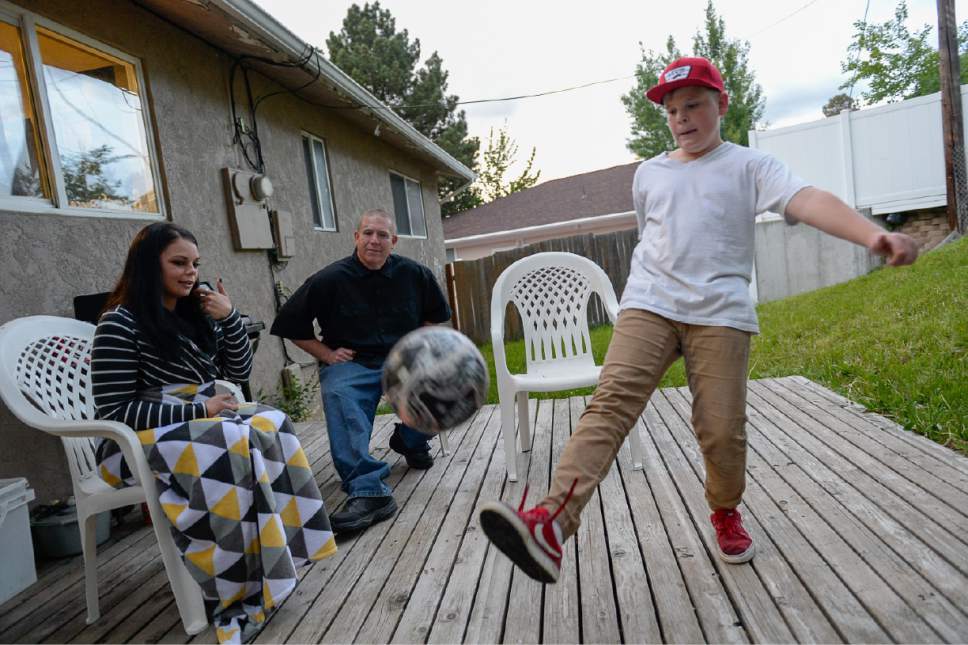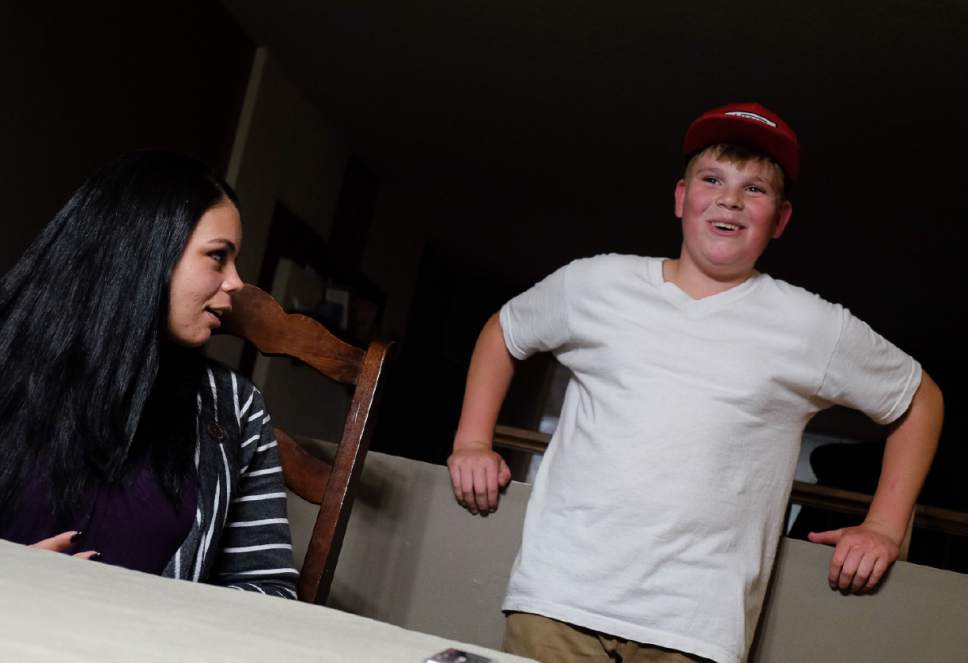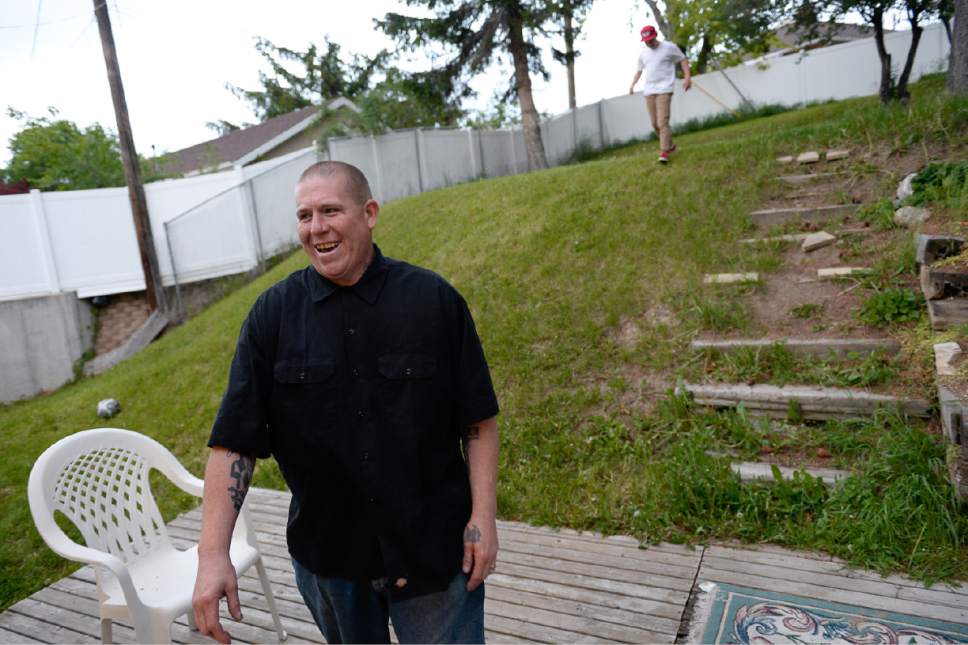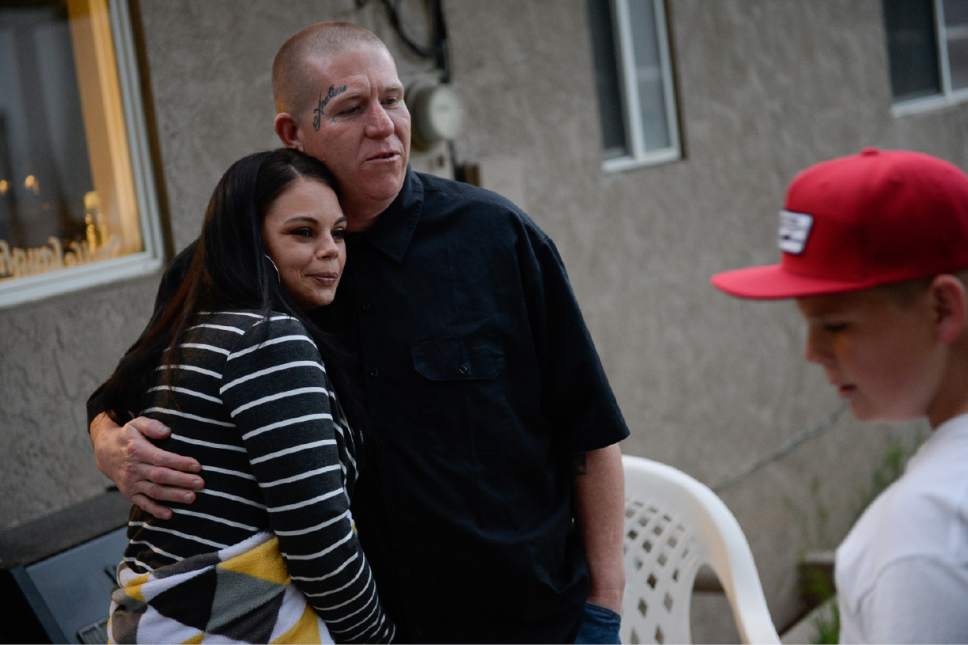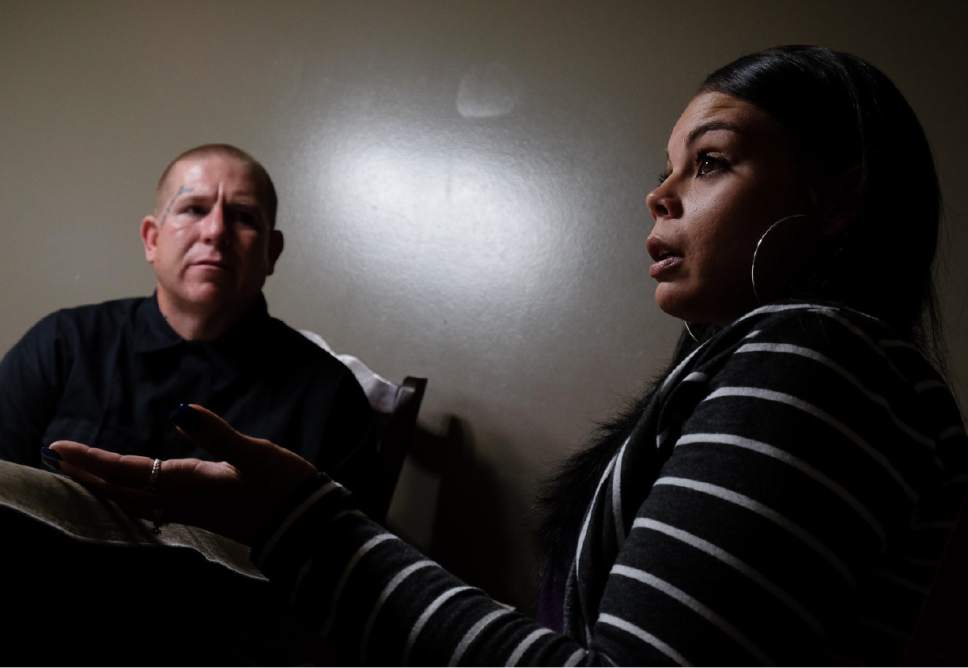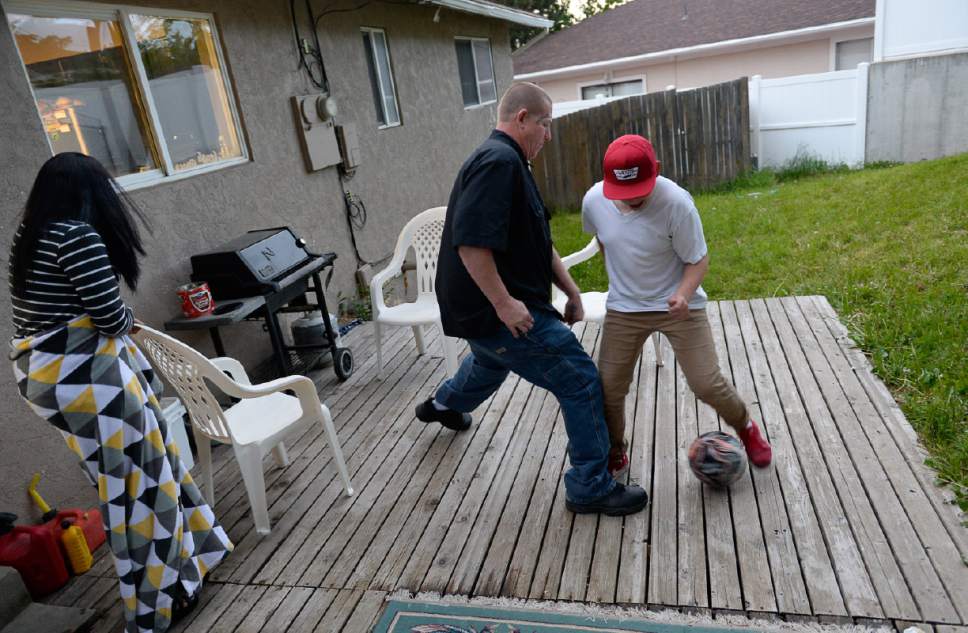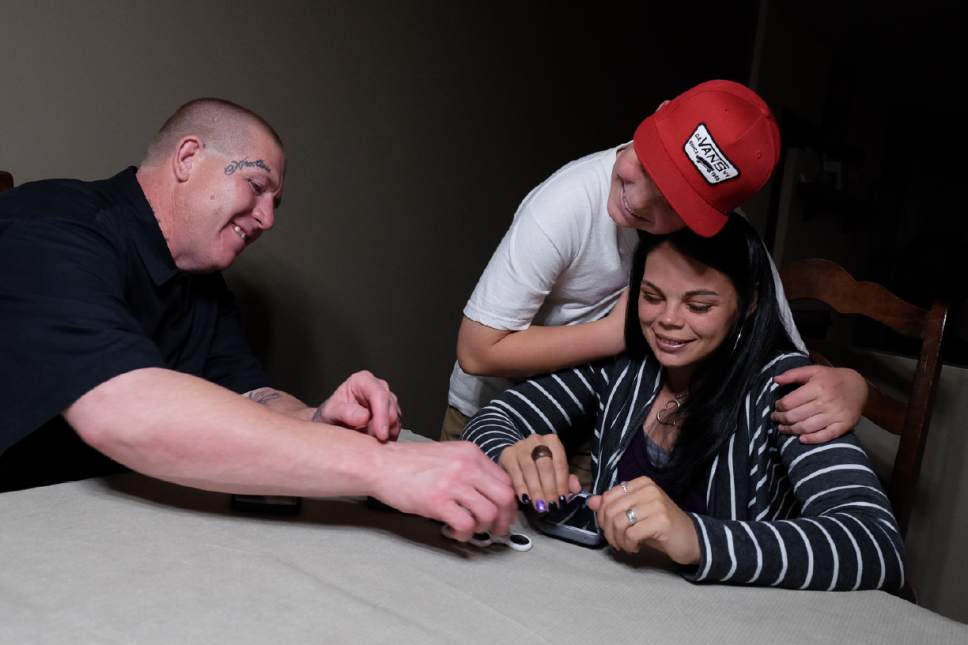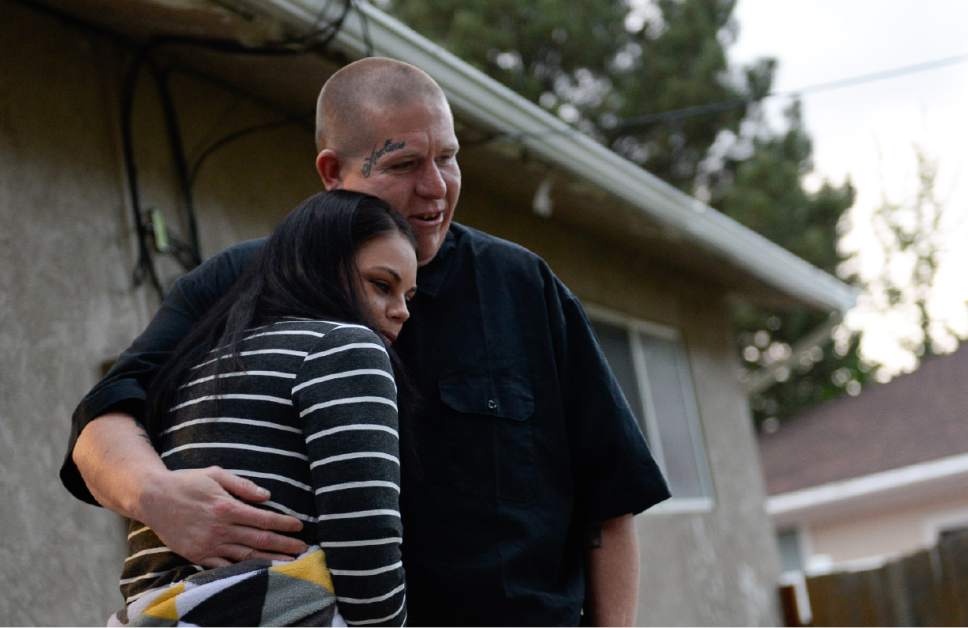This is an archived article that was published on sltrib.com in 2017, and information in the article may be outdated. It is provided only for personal research purposes and may not be reprinted.
Bountiful • Opioid addiction nearly wrecked their lives, but Amanda Brunson and her husband, Michael Richmond, found a saving grace.
In their early days of group therapy sessions at Davis Behavioral Health last summer, Richmond shared more about his struggles with sobriety, whereas Brunson fell silent as suppressed guilt rose to the surface.
"I was embarrassed," Brunson, 30, said in an interview at their Bountiful home. "Everyone was embarrassed that they had been to jail or whatever, but I was embarrassed because [my addiction] got to the point where I got my kids taken.
"In a blink of an eye, my life wasn't mine."
Brunson and Richmond pulled back from the brink — job loss, homelessness and almost surrendering parental rights to their four children — with help from the Opioid Community Collaborative, a medically assisted treatment and therapy program offered at Davis Behavioral Health, which the couple joined in August.
With opioid addiction at epidemic levels in Utah and across the country, state officials are deploying $5.5 million in new federal cash as of May 1 to attack the crisis, partly by setting up or bolstering programs like the one in Davis County.
—
Ground war • The Department of Health and Human Services (HHS) grant is Utah's share of $485 million being sent to U.S. states and territories under the 2015-2016 21st Century Cures Act. The money will be distributed through the Utah Division of Substance Abuse and Mental Health Services and has been allocated for only one year.
Aimed at creating or expanding programs to combat opioid abuse rising nationwide, the money has been awarded based on population, rates of overdose deaths and unmet need for opioid-addiction treatment.
An average of 24 Utahns died each month in 2015 from prescription opioid overdose, according to the Utah Department of Health (UDOH). The Centers for Disease Control and Prevention ranked Utah seventh nationally for drug-overdose deaths from 2013 to 2015.
Utah officials intend to put at least part of the HHS cash to work in ground-level treatment programs in hopes of spurring wider community-based action across the state, said Brent Kelsey, assistant director of the UDOH's Substance Abuse and Mental Health Services division.
"Our goals are to reduce overdose deaths and we hope this will increase partnerships with communities to try and address these problems," Kelsey said. "We are trying to push for integrative treatment models at the local level and also promote recovery."
—
Widespread toll • In applying for the HHS money, state officials also compiled one of the sharpest pictures to date of Utah's opioid problem, making clear the scourge affects people from all socioeconomic backgrounds, housing and health insurance statuses, and types of employment.
Addiction patterns vary widely from region to region, officials say — calling for approaches tailored to those needs.
Based on overdose deaths and emergency room visits, the worst-afflicted areas range from urban pockets of downtown Ogden and Salt Lake City to St. George and rural Tooele County. Utah's economically depressed coal country also is a hot spot.
Tooele County and the region covering Emery, Carbon and Grand counties, in fact, had the state's two highest rates of opioid deaths, at 33.96 deaths and 33.92 deaths per 100,000 residents, respectively, between 2014 and 2015.
"Opioids have devastated our communities. Everyone has known someone, if not two or three people, who have died," said Karen Dolan, director of Price-based Four Corners Behavioral Health. "It's left this community reeling because we have lost so much potential. It's unbelievable."
Employment also is a mixed bag for opioid users in Utah, UDOH research shows. In Salt Lake County, for example, 59 percent of opioid users are unemployed and 13.6 percent have full-time jobs. But, in more-affluent Summit County, a third of users have full-time employment and 23 percent work part time or not at all.
Health insurance coverage of opioid users also varies widely across the state. In Uintah, Daggett and Duchesne counties, they are spread among those having private insurance, other forms of insurance, Medicaid coverage and no insurance. Conversely, almost 80 percent of opioid users in Wasatch County have no health insurance.
—
Too many pills • A significant share of the new HHS money will expand current public-awareness campaigns aimed at doctors and other opioid prescribers, urging them to prescribe less, said Angela Stander, UDOH's prescription-overdose prevention coordinator.
"This became a problem because of over-prescribing," Stander said.
Since 2007, the Legislature has passed 101 laws addressing prescription misuse, touching on prescribing practices; overdose prevention with an emergency drug called naloxone; court-ordered treatment; and bolstering a statewide controlled-substance database.
But now surveillance and preventive efforts will be broadened, Stander said, in hopes of reducing opioid availability and to get patients to be more cautious with medications, including leftover pills.
Health workers at Four Corners Behavioral Health plan to expand medication-based opioid-treatment programs. But they'll also use some of their new cash to hire an addictionologist, who will work with prescribers and educate them on the implications of over-prescribing.
Dolan, the Four Corners director, said she was thrilled with the effects the grant monies could have.
"To have something we can do for people is very exciting," she said. "What I have found is that people in our community care so much. Law enforcement, moms and dads, everyone is on board with this. Everyone is excited to put out a plan and put in the effort to turn this around."
—
Sneak attack • Addiction crept up on them after the birth of their first son 13 years ago. Brunson rebroke her tailbone during the pregnancy and was prescribed rest and OxyContin for her pain, which she took as directed and refilled religiously.
Richmond, 38, started taking a couple of pills here and there, he said, for an old ankle injury that still bothered him.
The two gradually slipped into a tailspin they thought, until nine months ago, they would never escape.
For the better part of the past five years, Brunson and Richmond have been homeless — crashing on friends' couches and eventually living in their car to avoid continued drug use. They lost jobs, homes, relationships with family and, ultimately, their four boys.
Brunson and Richmond lost custody two years ago in July. The three youngest boys — Lucious, 12; Dimitrious, 11; and Arcelious, 6 — were placed in foster homes while the eldest son, 13-year-old Michael, was sent to live with cousins in Colorado.
After a few false starts with the Davis County treatment program, Richmond said he and his wife got serious last August after being told they'd have to sign over their parental rights if they didn't seek help.
—
Break the cycle • Davis Behavioral Health has partnered for two years with Intermountain Healthcare to provide its free medication-assisted treatment program, which gives patients closely controlled prescriptions of suboxone and vivitrol to slowly ratchet down their opioid intake and wean them off the drugs.
Along with group or individual therapy, patients also are connected with community partners for employment and housing help, said Brandon Hatch, executive director of Davis Behavioral Health.
The program has seen 150 patients from Davis County in its two years. Nearly 70 percent of patients remain in the program 18 months later.
"We have been just blown away by the outcomes of what we have been seeing with our patients," Hatch said. "This money will give us a chance to expand [the program] and help more people in Davis County get the help they need."
—
New cycle • In the past nine months, Brunson and Richmond have attended group meetings every Monday, supplemented by individual therapy sessions. They've maintained employment — he works at a tire shop; she will soon start school to become a dental assistant — and they moved into a new apartment in late February.
Lucious came home about two months ago and the rest of their children will return by the summer. Richmond said their presence will help them stay sober.
"We own our sobriety now because of our groups and [this treatment]," he said recently, as he played soccer with Lucious in the backyard. "Nowadays we look for reasons not to get high, when prior we looked for reasons to get high."
kgifford@sltrib.com Twitter @kelgiffo —
Also
Police departments are taking precautions against accidental overdoses of officers who come into contact with opioids. › A4


